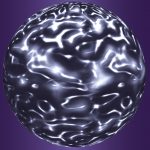Link to Pubmed [PMID] – 30443326
Interface Focus 2018 Oct;8(5):20180025
Autophagy is one of the most versatile recycling systems of eukaryotic cells. It degrades diverse cytoplasmic components such as organelles, protein aggregates, ribosomes and multi-enzyme complexes. Not surprisingly, any failure of autophagy or reduced activity of the pathway contributes to the onset of various pathologies, including neurodegeneration, cancer and metabolic disorders such as diabetes or immune diseases. Furthermore, autophagy contributes to the innate immune response and combats bacterial or viral pathogens. The hallmark of macroautophagy is the formation of a membrane sack that sequesters cytoplasmic cargo and delivers it to lysosomes for degradation. More than 40 autophagy-related (ATG) proteins have so far been identified. A unique protein-conjugation system represents one of the core components of this highly elaborate machinery. It conjugates six homologous ATG8 family proteins to the autophagic membrane. In this review, we summarize the current knowledge regarding the various functions of ATG8 proteins in autophagy and briefly discuss how physical approaches and reconstitution contributed in deciphering their function.

